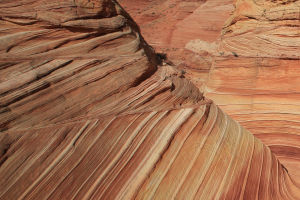The desert is a vast and intriguing landscape, characterized by its extreme climate, sparse vegetation, and unique geological features.
One of the most striking aspects of the desert is its texture, which encompasses the physical composition and tactile qualities of its surfaces.
The desert's texture is defined by its sandy expanses.
The fine grains of sand, sculpted by winds over centuries, create a mesmerizing mosaic of dunes and ripples that stretch as far as the eye can see.
There are waves of the sea, and there are waves of sand in the desert. It begins with the breakdown of rocks into smaller particles through wind, water, and chemical reactions. These particles, known as sediment, are then transported by wind or water to the desert.
As the wind blows, it picks up and moves the sediment, continuously shaping and rearranging it.
Over time, the constant movement and friction of the particles against each other smoothens the edges, resulting in the fine and granular texture that characterizes desert sand.
When one walks across the desert, the texture of the sand underfoot is soft and yielding, yet each step leaves an impression, a testament to the transient nature of this environment.
The fine, granular texture of the sand gives the desert an ethereal quality as if walking on a sea of grains.
Littered amidst the sandy landscape are rocky outcrops and boulders, adding another layer of texture to the desert.
The coarse and jagged surfaces of these rocks provide a stark contrast to the smoothness of the sand. While the vegetation in the desert is sparse, it plays a vital role in shaping the texture of the landscape.
Cacti, with their thick and waxy skin, stand tall against the arid climate.
Their spines, sharp to the touch, and the texture of cactus skin and spines serve as a defense mechanism, warding off potential threats and minimizing water loss.
Canyons, plateaus, and cliffs, carved over thousands of years by wind and water, create a varied tapestry of textures.
Run your fingers along the walls of a canyon, and you can feel the intricate patterns etched by time, each crevice telling a story of erosion and transformation.
The desert's texture is not confined to the ground alone – it extends to the sky above.
The vast expanse of the desert sky, often cloudless and clear, lends a smooth and unbroken backdrop to the landscape.
The intense blue hue, stretching endlessly from horizon to horizon, creates a sense of vastness unmatched by any other environment.
This desert texture, unaffected by the city, is mesmerizing and attracts many people to visit the desert and experience the barren beauty of nature.


